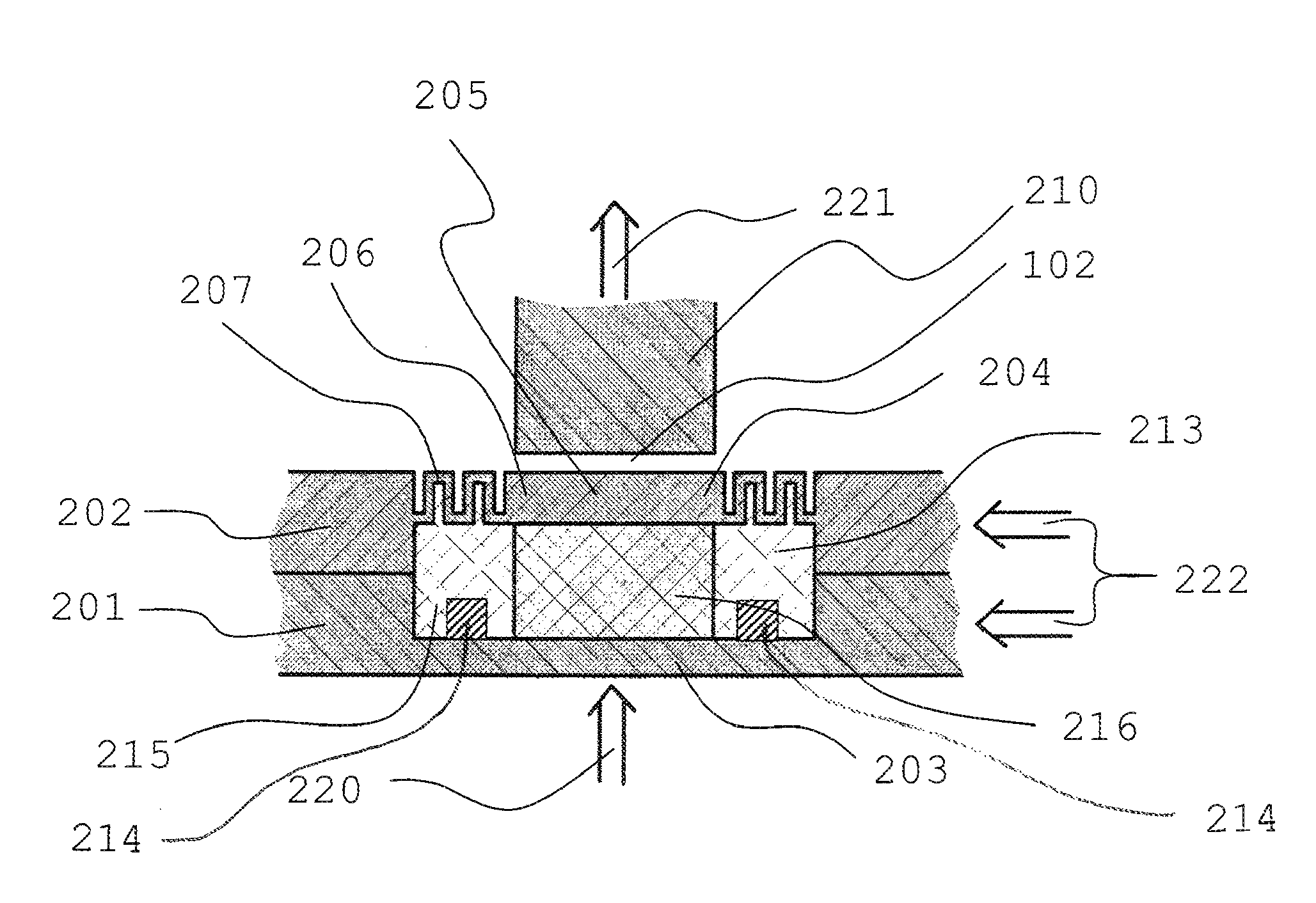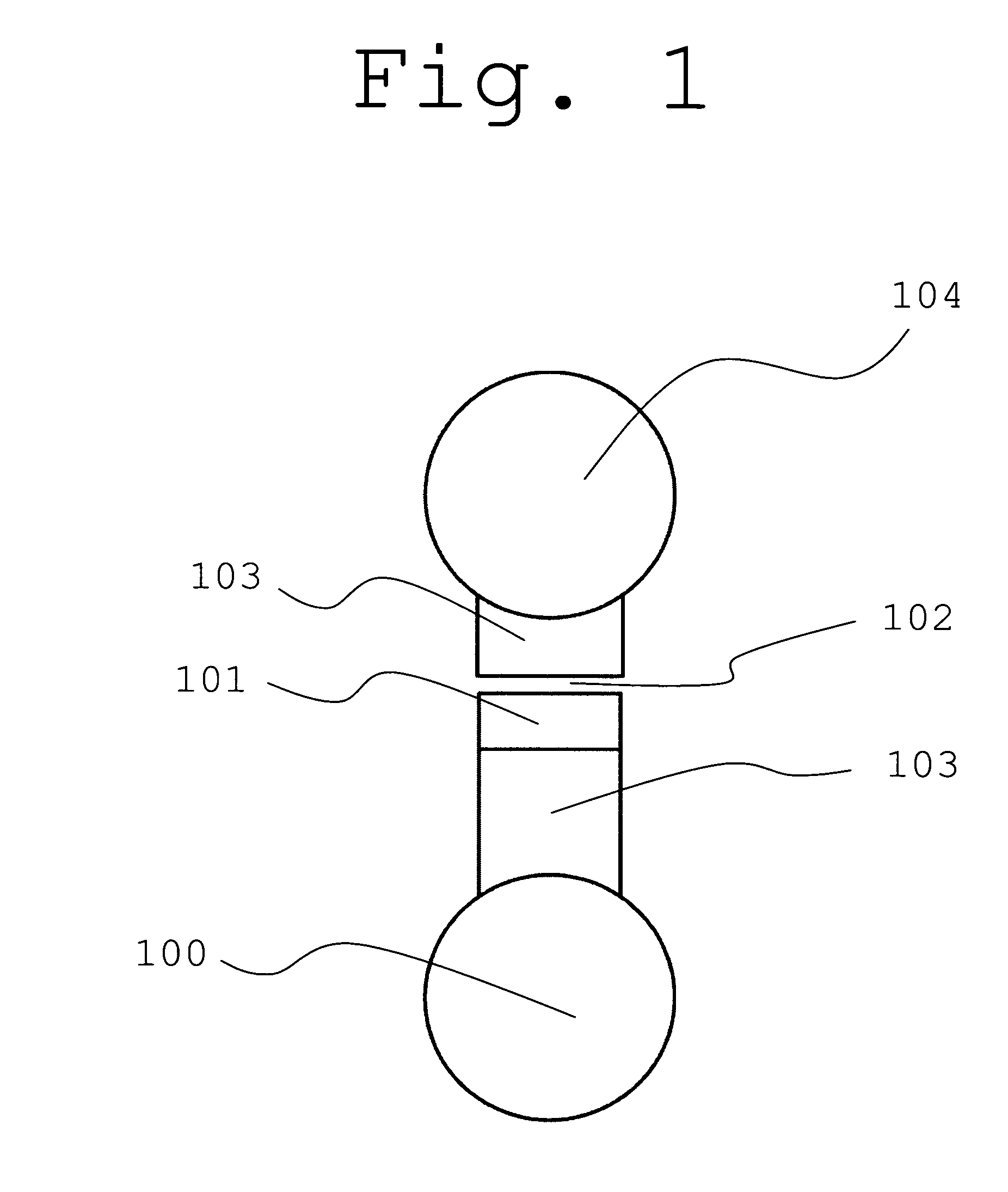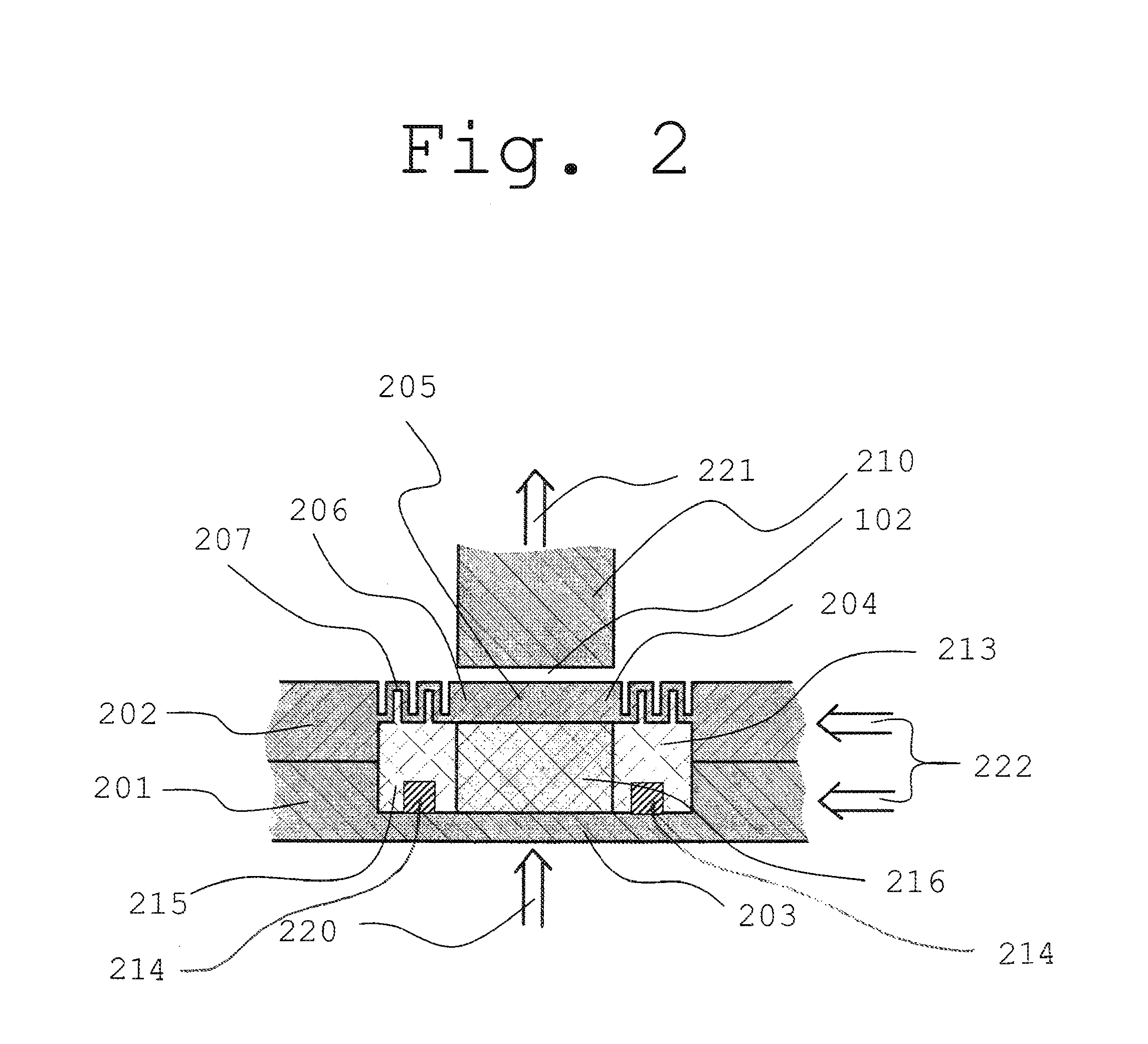Miniaturized high conductivity thermal/electrical switch
a high-conductivity, switch technology, applied in the direction of thermal micromechanical switches, thermal switch details, applications, etc., to achieve the effect of improving on/off modulation, high thermal and electrical conductivity
- Summary
- Abstract
- Description
- Claims
- Application Information
AI Technical Summary
Benefits of technology
Problems solved by technology
Method used
Image
Examples
Embodiment Construction
[0030]A high conductivity switch according to the present invention opens new possibilities for thermal and electrical control and for the implementation of different miniaturized systems, particularly in space applications.
[0031]An active thermal control system is schematically illustrated in FIG. 1. If an excessive amount of heat is generated in an arbitrary device 100, i.e. the heat source, it might be necessary to conduct some heat away from the device 100 in order to avoid overheating. This is accomplished through one or two heat conductors 103 to a thermal heat sink 104, which can be a radiator or a latent heat storage device. The two heat conductors 103 are separated by an air gap 102 in sequence with a thermal switch 101. At a certain predetermined temperature the switch 101 closes the air gap 102 permitting a high heat flux to flow from the heat source 100 to the heat sink 104. A desired feature of the thermal switch 101 is to have as high temperature modulation as possible...
PUM
 Login to View More
Login to View More Abstract
Description
Claims
Application Information
 Login to View More
Login to View More - R&D
- Intellectual Property
- Life Sciences
- Materials
- Tech Scout
- Unparalleled Data Quality
- Higher Quality Content
- 60% Fewer Hallucinations
Browse by: Latest US Patents, China's latest patents, Technical Efficacy Thesaurus, Application Domain, Technology Topic, Popular Technical Reports.
© 2025 PatSnap. All rights reserved.Legal|Privacy policy|Modern Slavery Act Transparency Statement|Sitemap|About US| Contact US: help@patsnap.com



